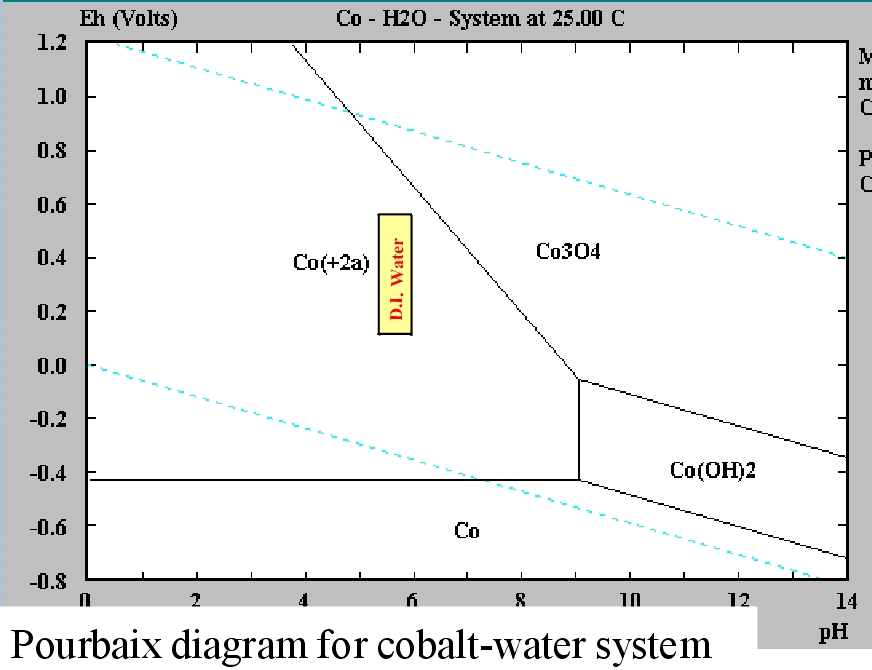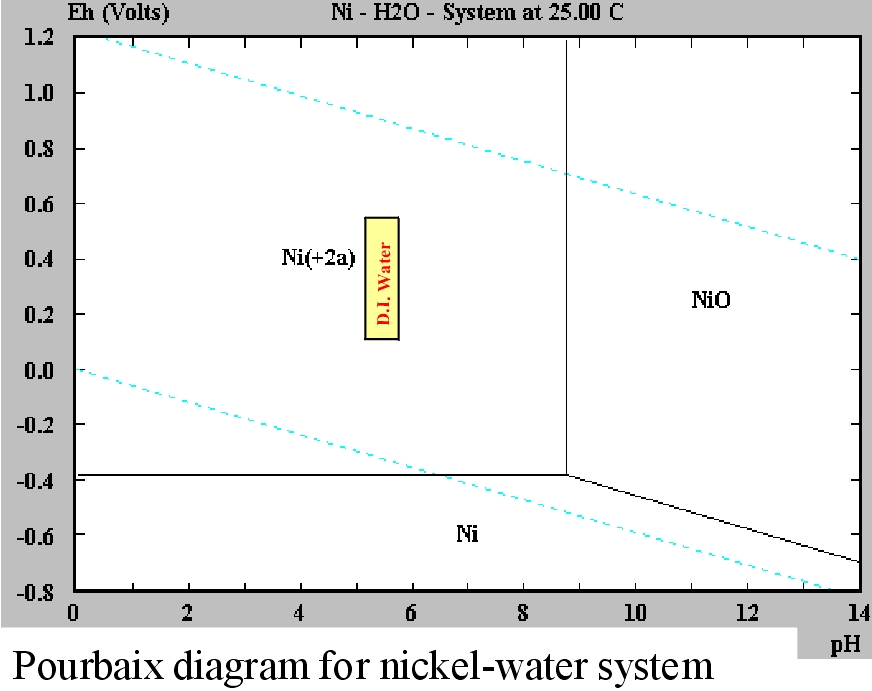Corrosion Issues for Magnetic Read-Write Heads
The GMR Sensor continues to become more complicated as more and thinner layers are incorporated into the stack. Figure 1 shows a schematic of the types of metals being engineered into today’s GMR devices.
The type and number of these materials offers a plethora of opportunities for galvanic and electrolytic corrosion. Galvanic corrosion occurs when two metal having different oxidation potentials contact each other in a conductive solution. Table I shows the galvanic series for the common metals used in the GMR stack. The more positive oxidation potentials will corrode preferentially to the more noble or lower oxidation potential metals.
Although galvanic corrosion can be an issue, the more predominate corrosion issue occurs when the same metallic surfaces are exposed to aqueous or non-aqueous electrolyte solvent solutions. This mechanism occurs as the anodic reaction or dissolution of the metal occurs with the reduction of the solvent (water or organic).
Unfortunately the mechanism of organic corrosion has not been studied to any significant degree, however the cathodic reactions for aqueous solutions are well understood. Typically, cathodic reactions include the reduction of dissolved oxygen gas, or the reduction of water to produce hydrogen gas. The later is driven by the solution pH.
A useful way to study the relation of potential to corrosion is with an electrochemical equilibrium diagram—called the Pourbaix Diagram. Pourbaix Diagrams are thermodynamic plots of potential vs. pH. Figure 2 show the Pourbaix diagram for cobalt. An interpretation of the cobalt Pourbaix diagram would indicate that cleaning cobalts in D.I. water may lead to corrosion, especially if it is not dried immediately.
 |
Table II summarizes the results of the other materials used in the GMR heads with respect to its potential corrosion behavior in D.I. water based on their Pourbaix diagrams. As can be seen, cobalt, nickel, managnese and copper form stable ionic species in D.I. water. Also note that although iron readily forms an oxide layer, it is not a continuous or passive coating. In fact, formation of the oxide layer most likely will cause more localized pitting corrosion to occur.
|
Element |
D.I. Water |
Corrosion Analysis |
|
Iron |
Maybe |
|
|
Nickel |
Yes |
|
|
Cobalt |
Yes |
|
|
Copper |
Yes |
|
|
Iridium |
No |
|
|
Manganese |
Yes |
|
|
Tantalum |
No |
Corrosion Kinetics - Corrosion rates are determined by applying a current to produce a polarization curve (the degree of potential change as a function of the amount of current applied) for the metal surface whose corrosion rate is being determined. The most common technique for determining the corrosion rate is based on the Tafel equation (beyond the scope of this discussion). Based on the Tafel plots, the corrosion rate for manganese without a corrosion inhibitor is 147 angstroms per minute
Corrosion Inhibitors
Corrosion inhibitors are an effective way to reduce metal corrosion. The inhibitors act by adsorbing onto the metal surface, thus providing an barrier to the corrosive environment. The advantages of organic corrosion inhibitors include:
- Presence of film prevents uniform corrosion attack
- Organic inhibitors increase the activation energy on the metal surface (passivation)
- Organic inhibitors have been shown to eliminate corrosion over wide range of pH values
- Inhibitors adsorb and form a thin polymeric layer
|
Corrosion rate in Cut Rate Enhanced Lapping Lubes (Å/min) |
Corrosion rate with Inhibitor in Cut Rate Enhanced Lapping Lubes (Å/min) |
Corrosion Rate Reduction |
|
|
Fe |
7.35 |
0.552 |
92% |
|
Mn |
124 |
3.5 |
97% |
|
Co |
4.42 |
0.17 |
96% |
|
Cu |
1.76 |
0.015 |
99% |
|
Ni |
1.33 |
0.02 |
99% |
With the use of the organic corrosion inhibitors specially formulated for the transition metals, a uniform continuous protective coating has been demonstrated for all of the common materials used for producing GMR/TMR thin film heads (Table III).
|
Element |
D.I. Water |
Organic Corrosion Inhibitor |
|
Iron |
Maybe |
No |
|
Nickel |
Yes |
No |
|
Cobalt |
Yes |
No |
|
Copper |
Yes |
No |
|
Iridium |
No |
No |
|
Manganese |
Yes |
No |
|
Tantalum |
No |
No |
|
Chromium |
No |
No |
|
Aluminum/ Alumina |
No |
No |
Corrosion Issues for Media Disk
The primary opportunitiy for corrosion of the media disk occurs during the backend processing and cleaning of the electroless nickel coating prior to sputter coating. Unfortunately present metrology techniques are unable to characterize and find the small localized corrosion on the significantly larger surface area of the disk prior to sputter coating. Thus, the problem is found during final media testing.
 |
The primary corrosion phenomea occurs due to the cleaning and drying process. From the nickel-water Pourbaix diagram nickel is susceptable to corrosion in the presence of water. The solution to solving this corrosion issue is to add an organic corrosion inhibitor to an IPA rinsing solution. This very thin (approximately 4 layer) organic coating essentially passivates the nickel surface and thus protects the nickel surface from localized corrosion.
